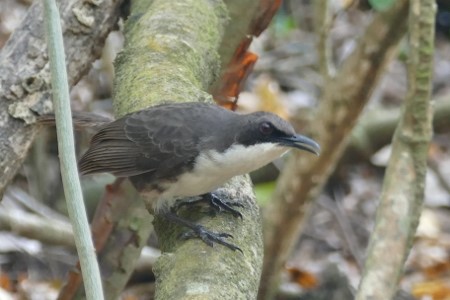Birdfinding.info ⇒ The Martinique form of White-breasted Thrasher is critically endangered and believed to be confined to the Caravelle Peninsula, where about 50% of its known habitat is protected in La Caravelle Nature Reserve. Within this area, it persists at a high local population density and is fairly easy to find. (For the St. Lucia form, see “St. Lucia Thrasher”.)
White-breasted Thrasher
Ramphocinclus brachyurus
Endemic to the Lesser Antilles: Martinique and St. Lucia. Occurs in dry deciduous forests along the eastern coasts of both islands.
Two distinct forms are recognized, and may be best regarded as separate species:
“Martinique Thrasher”: mostly on the Caravelle Peninsula, in an effective habitat area of approximately 5 km2, with a population that was estimated at 200 to 400 individuals in 2005. It was believed extinct from 1905 until it was rediscovered in 1951, and has generally increased since then.
“St. Lucia Thrasher”: along the eastern coast of St. Lucia from the Marquis River valley south to Praslin, with a population that was estimated at 1,100 individuals in 2016.
Identification
A largely terrestrial thrasher that is dark brown above and white below, with a blackish mask. The two forms have the same overall pattern but differ in tone and contrast.
“Martinique Thrasher” has grayish brown upperparts and its crown, back, wing coverts have whitish fringes that give it a subtly frosted appearance and highlight its blackish mask. The border between brown and white on its sides is uneven and spotty.

“Martinique Thrasher,” R. b. brachyurus. (La Caravelle Nature Reserve, Martinique; April 5, 2017.) © Christophe Gouraud
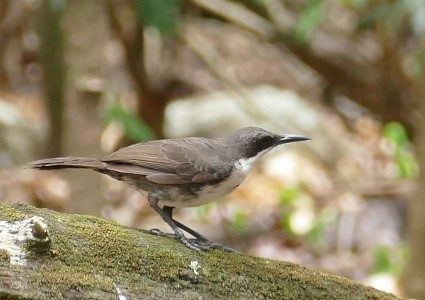
“Martinique Thrasher,” R. b. brachyurus, showing grayish-brown upperparts with warmer brown wings and spotty, uneven brown on its sides. (La Caravelle Nature Reserve, Martinique; May 2018.) © Marc Pommarel

“Martinique Thrasher,” R. b. brachyurus. (La Caravelle Nature Reserve, Martinique; January 15, 2016.) © Annika Lindqvist
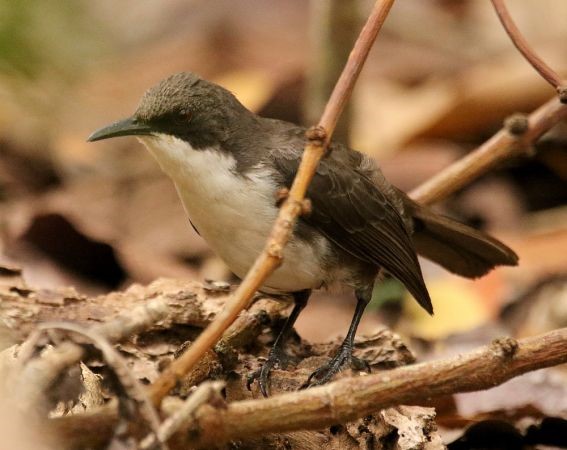
“Martinique Thrasher,” R. b. brachyurus. (La Caravelle Nature Reserve, Martinique; April 2018.) © Pierre Crouzier
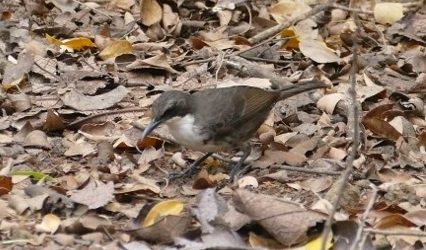
“Martinique Thrasher,” R. b. brachyurus, showing grayish-brown upperparts with warmer brown wings. (La Caravelle Nature Reserve, Martinique; May 2018.) © Marc Pommarel
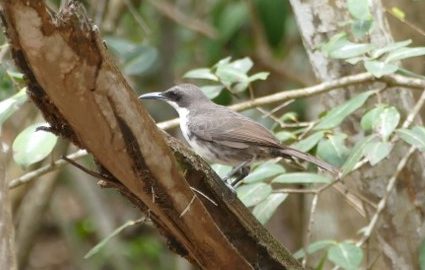
“Martinique Thrasher,” R. b. brachyurus, showing grayish-brown upperparts with warmer brown wings and spotty, uneven brown on its sides. (La Caravelle Nature Reserve, Martinique; May 2018.) © Marc Pommarel

“Martinique Thrasher,” R. b. brachyurus. (La Caravelle Nature Reserve, Martinique; November 6, 2015.) © Jens Thalund
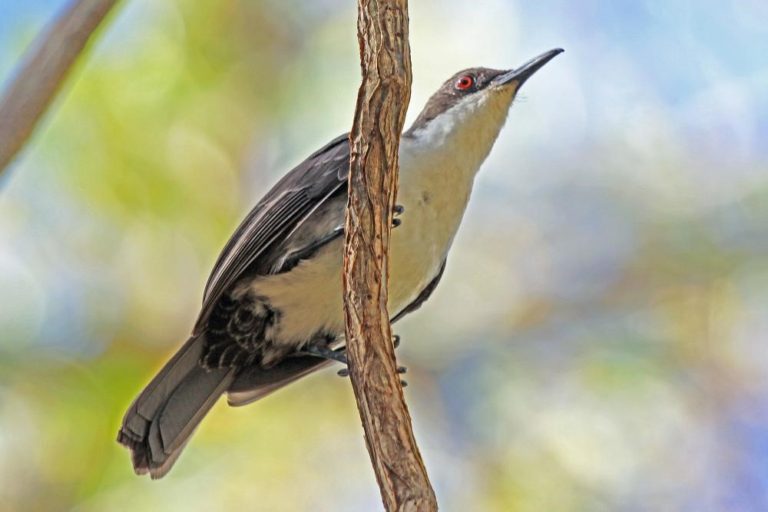
“Martinique Thrasher,” R. b. brachyurus, ventral view, showing red eye in direct sunlight. (La Caravelle Nature Reserve, Martinique; August 3, 2013.) © Greg Griffith
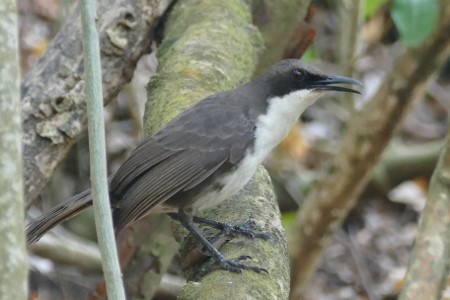
“Martinique Thrasher,” R. b. brachyurus. (La Caravelle Nature Reserve, Martinique; May 2018.) © Marc Pommarel

“Martinique Thrasher,” R. b. brachyurus. (La Caravelle Nature Reserve, Martinique; May 2018.) © Marc Pommarel
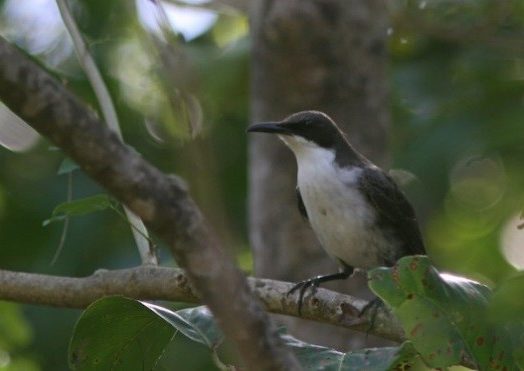
“Martinique Thrasher,” R. b. brachyurus. (La Caravelle Nature Reserve, Martinique; December 13, 2017.) © Larry Therrien

“Martinique Thrasher,” R. b. brachyurus. (La Caravelle Nature Reserve, Martinique; December 13, 2017.) © Larry Therrien

“Martinique Thrasher,” R. b. brachyurus, showing “frosted” appearance of upperparts. (La Caravelle Nature Reserve, Martinique; April 12, 2018.) © Erika Mitchell

“Martinique Thrasher,” R. b. brachyurus. (La Caravelle Nature Reserve, Martinique; April 12, 2018.) © Erika Mitchell
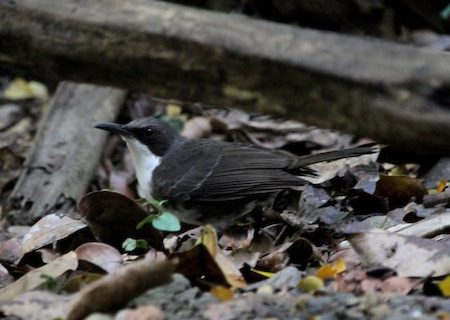
“Martinique Thrasher,” R. b. brachyurus. (La Caravelle Nature Reserve, Martinique; February 20, 2014.) © Stephen Gast
“St. Lucia Thrasher” has an essentially bicolored appearance: uniformly dark chocolate brown above, with a sharper—but still irregular—demarcation between the brown and white on its sides.
Voice. Vocalizations of the “Martinique Thrasher” are not fully described in the literature. A behavioral study conducted in 2011-12 (Gros-Desormeaux et al. 2015) identified eight types of calls, most of which were single or paired notes (rendered as: krek; gnok; chu-ik; chee-ka; peep; and tseeep) repeated at regular intervals. Also a scolding rattle call and what the authors denote as the “complex call.” Recorded vocalizations include:
High-pitched, sharp tseeep: Macauley Library recording from February 20, 2019, © Richard Fleming
Low-pitched, rough krek: Macauley Library recording from February 20, 2019, © Richard Fleming
Excited scolding: Macauley Library recording from April 27, 2011, © Mark Oberle
Notes
Polytypic species consisting of two recognized subspecies that are distinct forms and likely best regarded as separate species: “Martinique Thrasher” (brachyurus) and “St. Lucia Thrasher” (sanctaeluciae).
IUCN Red List Status: Endangered.
Frontiers of Taxonomy: Two Species of White-breasted Thrasher.
The Martinique and St. Lucia forms of White-breasted Thrasher are very similar in appearance, occupy similar niches on adjacent islands, and have always been classified as a single species. They share approximately the same shape, color pattern, and habitat. Nevertheless, there are consistent differences between them, and a growing body of evidence suggests that they are best regarded as separate species.
The “St. Lucia Thrasher” is about 20% larger overall and has more cleanly contrasting bicolored chocolate-brown-and-white plumage, whereas the “Martinique Thrasher” is paler and grayer above and less immaculate below. Its crown, back, wing coverts have whitish fringes that give it a subtly frosted appearance, and the border between brown and white on its sides tends to show more of a ragged, spotty, gradual color transition—however, both forms could be described this way, so the difference is a matter of degree. In strong light “St. Lucia” appears warm-brown above, whereas “Martinique” appears mostly cold, grayish-brown with a warmer tone on the wings.
Behaviorally, “Martinique Thrasher” appears to be more purely terrestrial than “St. Lucia.” Though they are not fully documented, vocalizations of the two forms also appear to differ. Finally, Miller et al. (2019) have stated that their as-yet unpublished genetic studies indicate that the reproductive isolation of the two forms is older than the divergence of other lineages among the Lesser Antillean mimids.
References
BirdLife International. 2018. Ramphocinclus brachyurus. The IUCN Red List of Threatened Species 2018: e.T22711137A129922471. http://dx.doi.org/10.2305/IUCN.UK.2018-2.RLTS.T22711137A129922471.en. (Accessed November 24, 2019.)
Brewer, D., and B.K. MacKay. 2001. Wrens, Dippers, and Thrashers. Yale University Press. New Haven.
Cody, M. 2019. White-breasted Thrasher (Ramphocinclus brachyurus). In Handbook of the Birds of the World Alive (J. del Hoyo, A. Elliott, J. Sargatal, D.A. Christie, and E. de Juana, eds.). Lynx Edicions, Barcelona. https://www.hbw.com/node/58183. (Accessed November 24, 2019.)
eBird. 2019. eBird: An online database of bird distribution and abundance. Cornell Lab of Ornithology, Ithaca, N.Y. http://www.ebird.org. (Accessed November 24, 2019.)
Gros-Desormeaux, J.-R., T. Lesales, and A.-G. Tayalay. 2015. Behavioral observations on the White-breasted Thrasher (Ramphocinclus brachyurus brachyurus): conservation implications. Acta Ethologica 18: 197-208.
Miller, M., J. DaCosta, J. Mortensen, M. Sorenson, R. Curry, and M. Reed. 2019. Next-generation phylogeny of Caribbean Thrashers. http://mj-miller.net/projects/post/thrashers. (Accessed November 24, 2019.)
Mortensen, J. L., K. F. Freeman, and M. N. Morton. 2014. White-breasted Thrasher (Ramphocinclus brachyurus), version 1.0. In Neotropical Birds Online (T.S. Schulenberg, ed.). Cornell Lab of Ornithology, Ithaca, N.Y. https://doi.org/10.2173/nb.whbthr1.01.
Raffaele, H., J. Wiley, O. Garrido, A. Keith, and J. Raffaele. 1998. A Guide to the Birds of the West Indies. Princeton University Press, Princeton, N.J.
